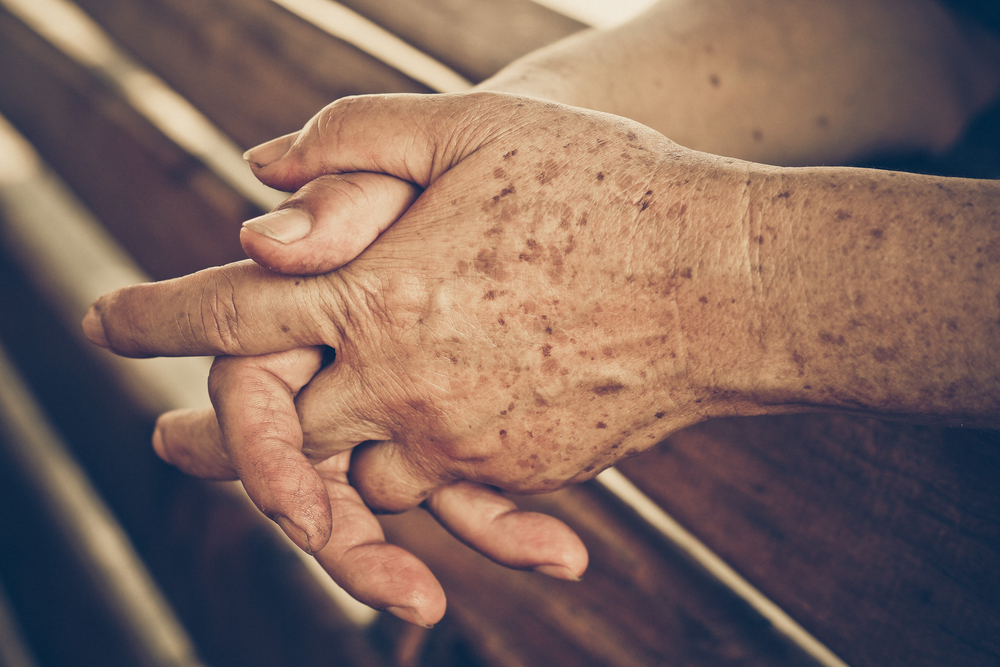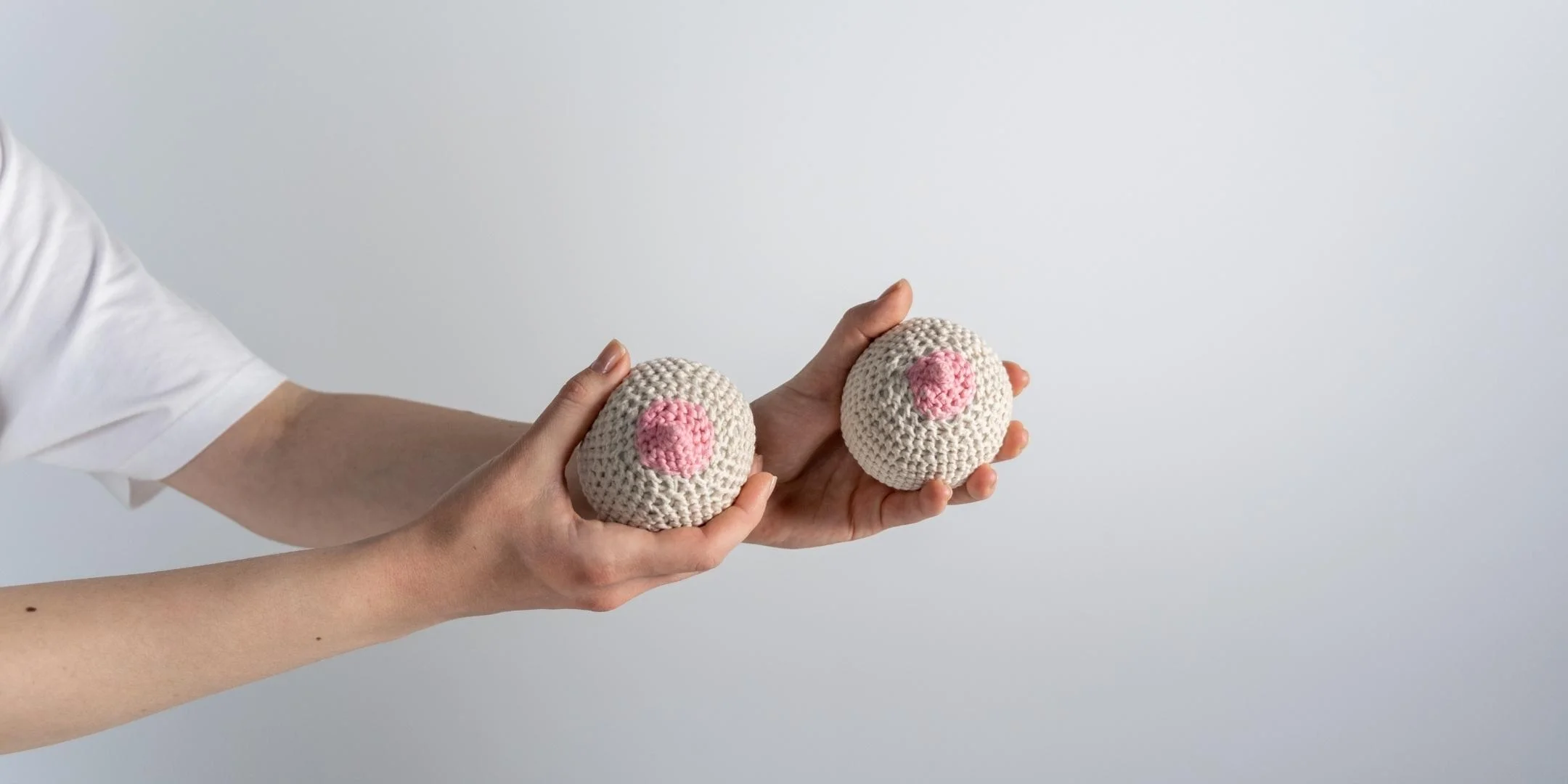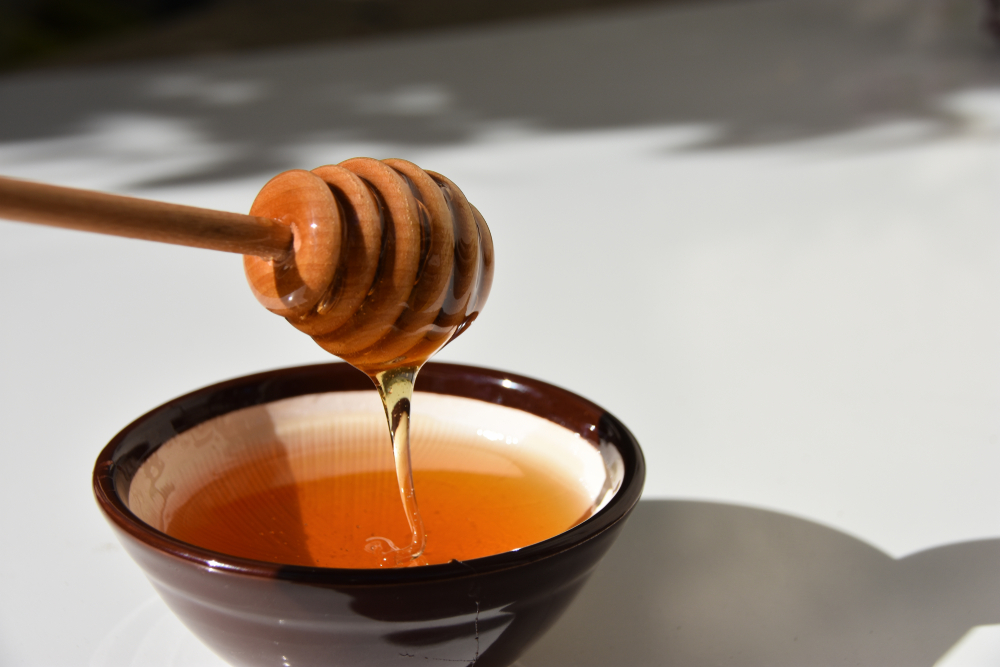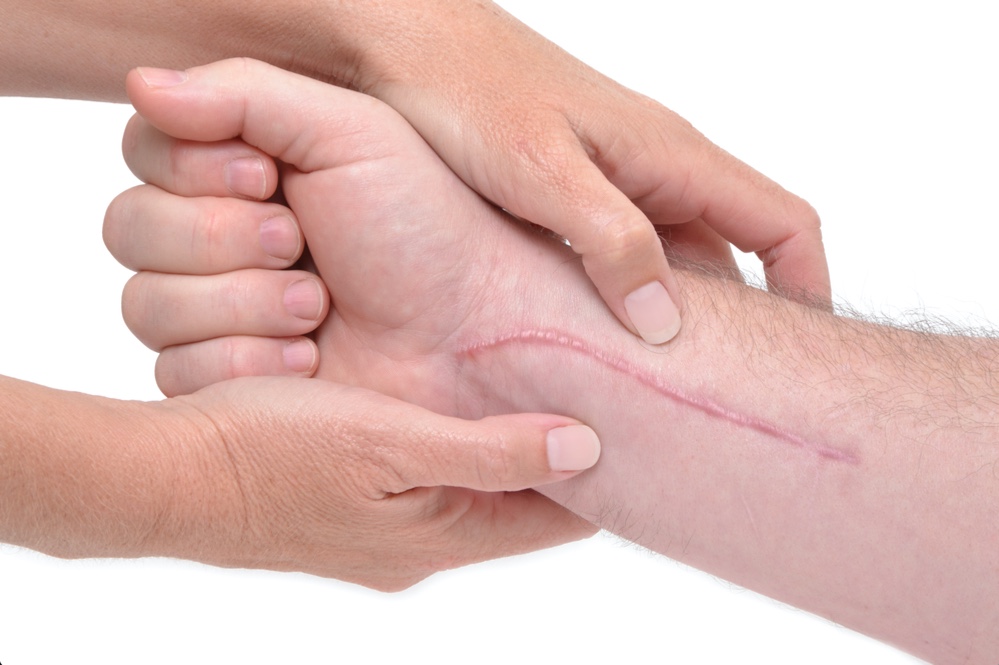Blissful hours whiled away at beaches on long summer days unfortunately come at a price. Sun spots, also known as age spots, liver spots or solar lentigines, represent one of the quintessential signs of ageing and overexposure to UV rays.
What Are Liver Spots?
Most commonly found on the face, hands and shoulders, solar lentigines are formed when pigment collects in the upper layer of epidermis and develops into a flat brown spot.
These blemishes are often round and dark in appearance, similar to lentils. Incidentally, the official scientific term for sun spot, lentigo, derives from the Latin word for lentil. Age spots may form on their own or cluster together. They appear predominantly on the parts of the body most regularly exposed to the sun.
A recent survey of 1,000 women conducted by one of the world’s largest beauty retailers revealed that sunspots constitute women’s greatest ageing concern after wrinkles, bothering a significant 36% of participants. However, the good news is that they can be easily treated using a range of cutting edge techniques.
Leading New Jersey dermatologist Dr. Joshua Fox explains that while true age spots are harmless, they can sometimes be confused with melanomas or skin cancers. “If you start to see age spots on your skin, ask your dermatologist to look at them to make sure they are not suspicious”, advises Dr Fox. Once your skin has been given the all clear, sunspots can be successfully reduced or even banished for good, giving your skin a rejuvenated and even-toned appearance.
“While ageing does cause a host of changes to our bodies, our skin doesn’t have to make us look or feel old,” explains Dr. Fox. “A consultation with your dermatologist can help you identify the right treatment for you that will reduce or even remove age spots and leave you feeling and looking younger.”
Who Is Most Likely to Suffer From Age Spots?
Sunspots can affect both women and men, however, certain individuals are more likely to suffer from age spots than others, such as:
- People with lighter skin tones.
- People with a hereditary tendency to develop age spots.
- Adults over 40, since melanin or pigment production in the skin increases as you age.
- Younger people who spend a lot of time outdoors or in the sun.
How Can Liver Spots Be Treated?
While all dermatologists advise that prevention is the best form of treatment, the benefit of hindsight is not always practicable for reversing existing damage.
If you feel self-conscious about your sunspots and have been contemplating treatment, there are a range of cosmetic procedures and products available from dermatologists and doctors that will eradicate them quickly and effectively.
Make sure you consult with a qualified skincare expert, which generally include dermatologists, plastic surgeons, facial plastic surgeons, and aestheticians.
Here are the 7 most popular and effective treatments administered by dermatologists.
Prescription Creams
There are a range of prescription skin bleaching creams available that can help fade sunspots over time. Most creams boast hydroquinone as their active ingredient. Age spots can fade over several months with regular daily use when applied in combination with retinoids (such as tretinoin, a vitamin A derivative used for treating acne) and a mild steroid.
Some of the most popular creams include hydroquinone 2% or 4%, or Tri Luma. Skin care creams containing glycolic acid, kojic acid, L-ascorbic acid (vitamin C), licorice extracts, N-acetylglucosamine, niacinamide (vitamin B3) or soy can also lighten dark spots and unwanted pigment on the skin.
Prescription creams must be applied in conjunction with sun protection lotion (SPF 30 or higher), and you should avoid exposure to the sun as much as possible. Most dermatologists recommend testing the product on a patch of skin (the inner wrist, for example) to ensure you are not allergic. Bleaching creams take time to work; they must be applied daily but not used excessively. Most people start to notice results after several months of consistent use.
Advantages:
- Prescriptions creams offer an affordable option when compared to more expensive treatments such as microdermabrasion or laser.
- Results are subtle and gradual and improve with use over several months.
- Hydroquinone has been proven to be an effective skin lightening agent.
Disadvantages:
- Studies have shown that hydroquinone has carcinogenic properties, can be toxic and mutagenic, with the possibility of causing long term damage to your cells.
- Bleaching creams also sometimes have the side effect of increased sensitivity to sunlight.
- Creams may also cause hyperpigmentation, skin irritation, itching, dryness, redness, and thickening of the skin.
Ideal candidates:
- People who have light sun spots — or early signs of sun spots — may find creams effective.
- Those seeking a gradual method of fading sun spots with no recovery period or downtime.
Cost:
Topical prescription creams generally cost between $50 and $200.
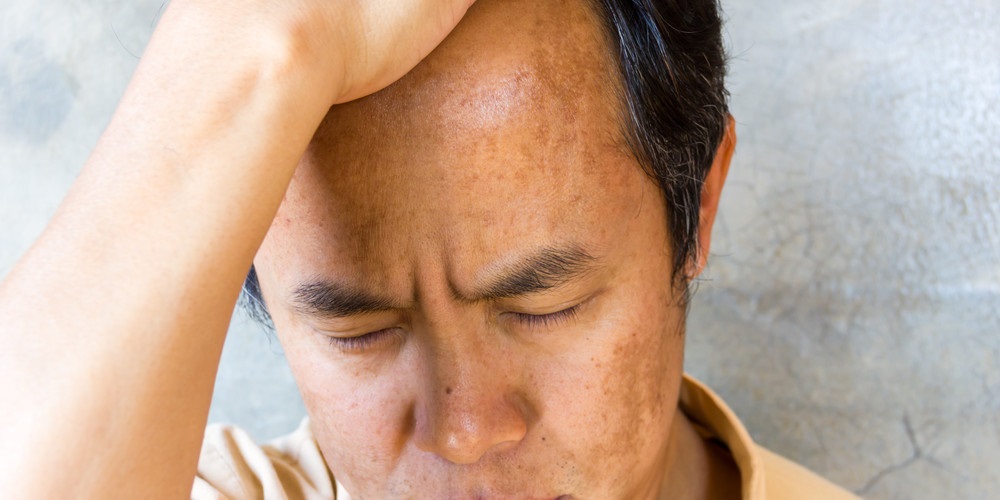
RELATED: Melasma Treatments That Work
Microdermabrasion
Microdermabrasion surgically sands or planes the outer layer of the skin, using a tool similar to a sandblaster equipped with a headpiece which sprays tiny mineral crystals.
It has been proven to be an effective method of treating age spots, with the added benefit of also smoothing fine lines and wrinkles, stimulating collagen and unclogging pores to give the skin a more refreshed and radiant look.
Usually a course of treatments is required for the best outcome. One treatment takes approximately thirty to sixty minutes and can even be carried out during your lunch hour. There is no downtime following treatment.
Advantages:
- Pain and swelling from microdermabrasion is usually minimal.
- New skin growth can be expected within 5-8 days.
- An immediate improvement is usually noticeable in the skin’s tone and texture.
- Skin appears more radiant and even with only a few treatments.
- Infections and scarring are highly unlikely.
Disadvantages:
- There may be some redness or irritation.
- It can be more costly than topical treatments.
- The outcome depends on the proficiency of the dermatologist and the efficacy of their equipment.
- Multiple treatments may be required to achieve the desired result.
- Microdermabrasion can be highly effective in treating age spots for some individuals, but not so effective for others.
- It doesn’t work as quickly or effectively as laser or chemical peels.
Ideal candidates:
- Have very light sun spots.
- Prefer a less invasive form of treatment.
- Are looking for uniform improvement across their skin, not only the eradication of age spots.
Cost:
Treatment may cost between $75-$300 per session.
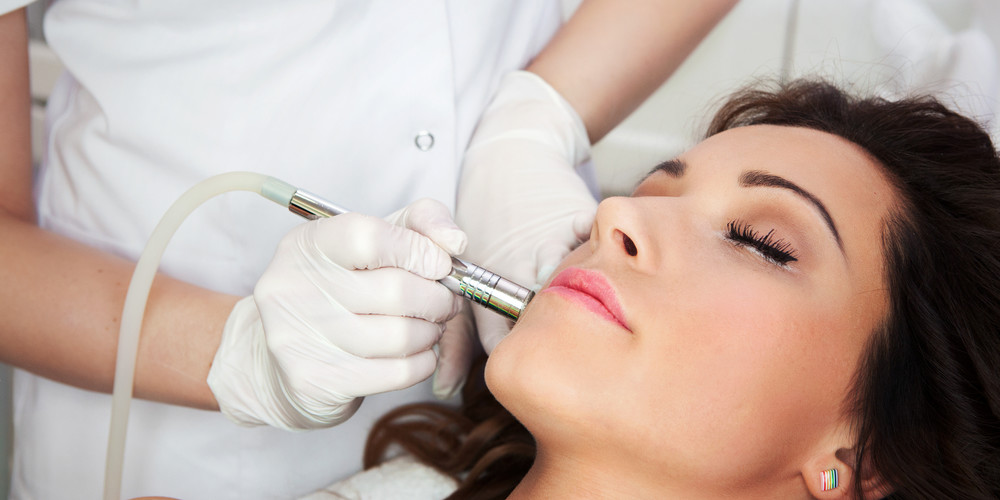
RELATED: Zwivel’s Guide to Microdermabrasion
Cryosurgery
Also used for the treatment of abnormal tissues such as keloids and tumors, cryosurgery offers a rapid and safe method of treating liver spots. Targeted spots are frozen using liquid nitrogen, with the skin darkening and ultimately peeling away from the body.
Freezing the skin at an extremely low temperature destroys the cells, generating new healthy skin in its place. The dermatologist may dip a Q-tip into liquid nitrogen and administer it to the spot, use a probe, or spray liquid nitrogen directly onto the skin.
It can safely be used on any part of the body, including the face, and is a non-invasive treatment technique which requires little downtime.
Advantages:
- Discomfort is minimal.
- Treatment is usually administered fairly quickly.
- Normally only one treatment is required.
- Insurance may cover the procedure if cryosurgery is carried out as a preemptive measure to remove a precancerous lesion.
- There is no downtime after application of the liquid nitrogen and patients can immediately resume their normal activities.
Disadvantages:
- There may sometimes be a permanent white scar where the sunspot has been burned off.
- People with darker skin tones are more at risk of skin lightening.
- The skin will blister and crust as the outer layer dries out and prepares to shed.
- Some redness and swelling may occur.
- The places where sunspots have been treated will be visible.
- In some cases there may be hair loss if the lesion is treated on a site with coarse hair.
Ideal candidates:
Most individuals are good candidates for cryotherapy. However, individuals with diabetes or circulatory problems who seek cryotherapy to treat sun or age spots on their lower legs, ankles and feet may need to take extra care as healing can be prolonged and the risk of infection slightly elevated.
Cost:
On average, cryosurgery costs between $500 and $900 per session. In some instances, health insurance may cover some of the cost.
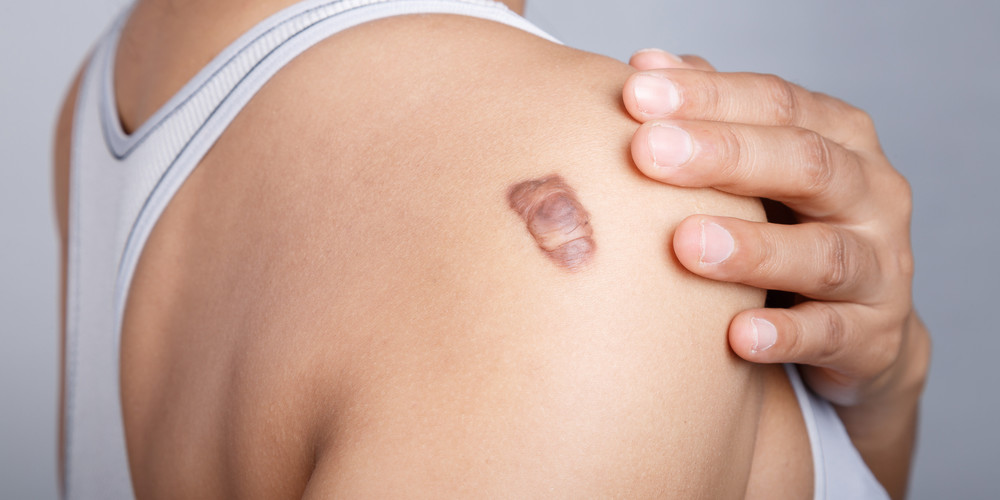
RELATED: Common Keloid Scar Treatments
Chemical Peels
Although chemical peels represent a more invasive measure of treating liver spots, they tend to achieve better results in a more rapid time frame than topical creams or microdermabrasion.
Chemical peels eradicate age spots by applying a chemical solution which removes the outer layer of old skin. The chemical peel typically comprises of alpha-hydroxy acids or AHA (a deep exfoliating agent such as glycolic acid), a combination formula called Jessner’s solution, trichloroacetic acid, or phenol. Different chemicals remove the skin to different depths, with glycolic acid offering a more gentle peel, and phenol a much deeper peel.
Since the arrival of chemical peels in the 1990s, they have evolved a great deal. “Our goal now isn’t so much to cause visible peeling as it is to infuse the skin with ingredients that diminish lines, build collagen, and improve tone,” explains Dr. Jennifer Linder, a Scottsdale Arizona board-certified dermatologist.
Your dermatologist can customize the peel and determine the appropriate peel depth for your skin by considering:
- The most appropriate chemical to use.
- Your skin’s sensitivity to the absorption of the chemical.
- The length of time the chemical should be left on your skin.
- Any pre-peel preparation that may have been performed to prime the skin, such as microdermabrasion or application of retinoid creams.
Different parts of the face respond differently to a chemical peel, with some sites healing faster than others. Facial skin in general is more forgiving and resilient than other skin on the body, because the skin heals from the pores after a peel (and the face has more pores).
The skin that emerges post-peel appears refreshed with age spots (along with fine lines and wrinkles) reduced or removed. Lighter peels may be repeated after a month, while deeper peels may only be performed again after 6 months.
Advantages:
- Irregular skin tone due to sunspots is evened out.
- Peels may stimulate new collagen production improving skin texture.
- Peels provide immediately noticeable results after only one treatment.
- Peels are often more affordable than other options.
- Peels can be customized to suit your skin.
Disadvantages:
- Chemical peels may reactivate cold sores.
- There is a small risk of scarring.
- There can be a temporary or permanent change of skin color, particularly if you have been on the pill and become pregnant or if you have a tendency to suffer from facial discoloration.
- Skin redness may last for a day or two to several weeks, depending on the depth of the peel administered.
- Darker skin tones may heal with hyperpigmentation or blotchiness.
- It can cause acne or blocked pores.
Ideal candidates:
- Have fair skin and light colored hair.
- Do not have a history of heart disease, as phenol peels may pose a risk.
- Are good candidates for anesthesia, since some deeper peels may require anesthesia.
- Are in a state of good physical health to facilitate swift healing.
Cost:
A light chemical peel should cost approximately $150, but deeper chemical peels can cost up to $6,000.
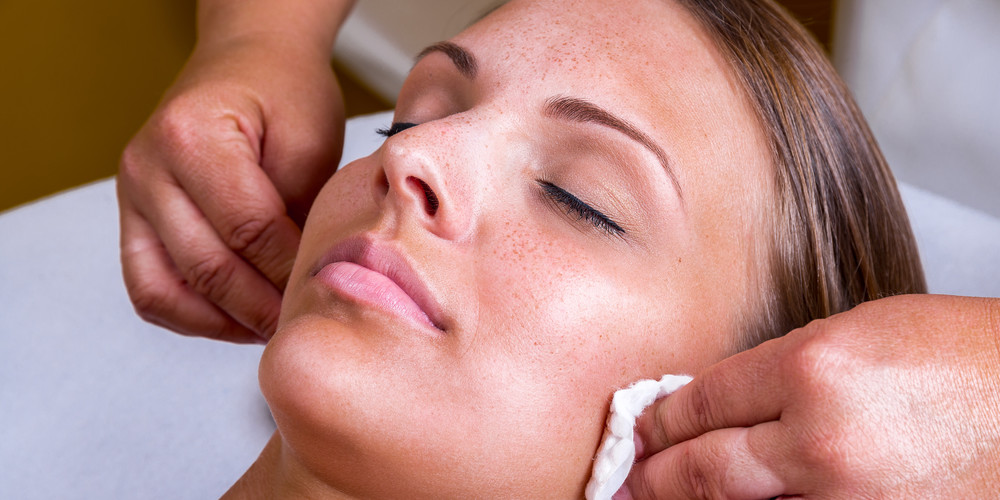
RELATED: Zwivel’s Complete Guide to Chemical Peels
IPL (Intense Pulsed Light)
IPL resurfaces photo-damaged skin through the gradual removal of the sun-damaged layers, allowing new healthy skin to grow in its place. The treatment uses a device which emits a range of lightwaves that are tuned and targeted to reduce melanin pigment present in age spots. Good results can be achieved over 3 to 5 treatments, carried out at regular fortnightly or three-week intervals. IPL poses minimal risk and little discomfort.
A cooling gel is administered to the skin prior to the procedure and the patient is given safety goggles to wear. A handpiece with a smooth glass surface is applied to the area, with the IPL device emitting rapid pulses of light. Some patients experience a tiny “zing” like a rubber band flicking against the skin with each flash.
High-powered IPL treatments offer the most effective results, but can be dangerous if not operated correctly. Therefore, be cautious of IPL offered by beauty salons as opposed to physician’s offices or clinics.
Advantages:
- The skin will have a smoother and more even tone.
- Age spots decrease in darkness with each treatment.
- Results can be maintained with good skincare and protection from the sun.
- IPL can be used on most parts of the body.
- The treatment stimulates collagen production which subsequently improves the skin’s texture.
Disadvantages:
- Although some improvement should be noticeable with each treatment, results will take the full series of treatments over 3-5 months to become apparent.
- Severe or dark age spots may require further sessions.
- Treatments can be time consuming, taking 30-90 minutes per session, depending on the size of the treatment area.
- Crusting of sunspots can occur, which may last up to 10 days.
- IPL can result in burns. To mitigate this risk, be sure to undergo IPL from a certified dermatologist or doctor rather than a beauty salon technician.
Ideal candidates:
- Are not pregnant.
- Are seeking sun spot treatment with no downtime.
- Do not have a history of complicated scarring.
- Do not have a history of hyper pigmentation.
- Are not diabetic.
Cost:
A single IPL treatment costs between $300 and $500 on average. Usually, 3 to 5 treatments are needed.
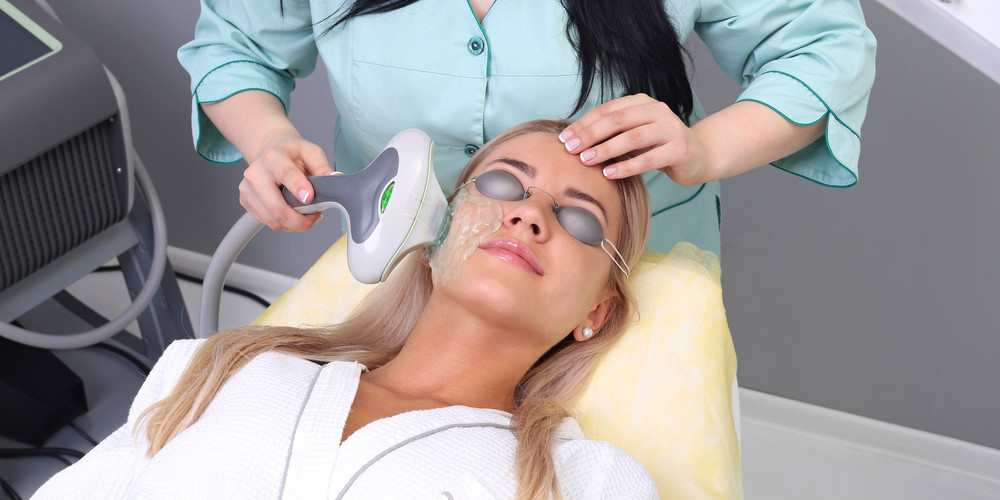
RELATED: Laser vs. IPL Treatments — Frequently Asked Questions
Non-Ablative Laser
Laser represents a major advance in the field of non-surgical skin rejuvenation and is becoming an increasingly popular method of addressing sunspots and sun damage. Of the new types of laser treatments available, non-ablative resurfacing lasers such as Fraxel and Pixel offer a technique which resurfaces portions of the skin without serious discomfort or long periods of recovery.
Fractional lasers operate on the premise that if only a fraction of the skin is treated with the laser, healing will be rapid. The “normal” skin that surrounds the treated area also facilitates more effective healing. Fractional lasers are therefore ideal for targeting sun damage in the form of age spots, but also have the additional benefit of improving skin laxity, smoothing the skin’s surface and reducing fine lines.
Fraxel inflicts a micro-injury to the skin, creating tiny holes with heat in a controlled manner. This in turns triggers the body’s natural healing processes and stimulates new collagen production. The Pixel laser functions in a similar manner, but penetrates the skin with less depth. Patients are likely to require between two and five Pixel treatments, while those undergoing Fraxel laser treatments may only need one or two.
Most patients experience minimal pain while the laser is being administered. However, cooling devices can be used in conjunction with Fraxel, which causes a more intensive heat sensation. Both Fraxel and Pixel lasers are FDA approved.
Advantages:
- Most patients notice a significant and immediate reduction in their sunspots after the first treatment.
- New collagen continues to form after the last treatment session so improvements can be seen 4 to 6 months afterwards.
- Any pain arising from treatment is usually very tolerable, with most patients experiencing only a mild burning sensation.
- The lasers can be safely used on almost any part of the body with sunspots.
- Your skin will appear brighter, fresher and more relaxed in the weeks following treatment.
- With annual treatments and careful sun protection, results can be maintained for years.
Disadvantages:
- Several series of treatments at three week intervals are usually required for the best results.
- Results may not be as effective as lasers that penetrate the skin’s layers more deeply, such as CO2 lasers.
- Darker skinned or more tanned patients may experience some darkening or lightening of the skin’s pigmentation following treatment. A test patch may be carried out on patients with darker skin tones.
Ideal candidates:
- Are aged in their 30s to 50s.
- Desire a laser treatment for sunspots that requires little to no downtime.
- Suffer from mild sun damage and sunspots.
Cost:
Full face laser resurfacing may cost between $900 and $1,900, depending on whether eyelids are included in the treatment. Full face resurfacing with the neck and cleavage area included costs between $1,400 and $1,900.
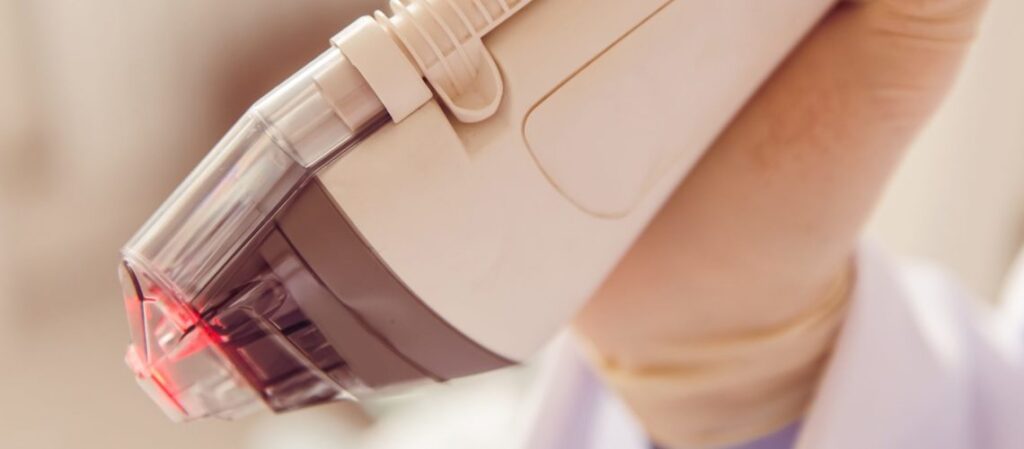
RELATED: The Benefits and Downsides of Laser Resurfacing
Fractional Carbon Dioxide CO2 Lasers
Fractional or pixilated CO2 lasers represent one of the latest advances in treatment for severe sunspots and skin damage. The CO2 laser has a longer wavelength and can permeate the skin more than non-ablative lasers like Pixel or Fraxel.
The laser pixelates the CO2 laser beam into thousands of micro-shafts of light that penetrate the deeper layers of the epidermis. The skin responds by repairing the tiny shafts and shedding the old sun-damaged skin, replacing it with new skin. A numbing cream is applied to the area to be treated, and anti-inflammatory tablets such as Toradol are also provided to minimize any discomfort during the procedure.
CO2 lasers are most effective at treating individuals who suffer from severe sun damage and sun spots (and also wrinkles, scarring and blotchiness). However, because they are more penetrative than non-ablative lasers, there is more downtime required to recover from treatment.
Finding a reputable certified dermatologist to administer CO2 laser is absolutely vital to ensuring you receive the best treatment for your skin and a wonderful end result, as well as minimizing the risk of complications like scarring. Full results will be apparent after 3-6 months. Usually only 1 to 2 treatments are required.
Advantages:
- For individuals with severe sun damage, sun spots and scarring, CO2 lasers can dramatically improve the skin’s appearance.
- Results can be maintained for several years if sunscreen is used regularly.
- The skin’s texture and tone in general is vastly improved, and wrinkles are also reduced.
- The CO2 laser can be used on darker skin tones.
Disadvantages:
- Skin may peel for 2-7 days, and take 3-14 days to heal.
- For 4-6 weeks afterwards, your skin may be slightly pink.
- You will need to take up to 10 days off to recover before you can go out in public.
- The treated area may heal with increased or decreased pigmentation.
- There may be some swelling in the treatment area for up to a week afterwards.
- There is a small chance of scarring. However, the possibility of scarring occurring can be decreased if you follow postoperative instructions closely.
Ideal candidates:
- Do not suffer from photosensitivity.
- Have not used Accutane in the last year.
- Have no history of difficulty healing or scarring.
- Are not pregnant , as the effects of laser on pregnant women have not been studied.
- Have no history of bleeding disorders.
- Are not diabetic, as diabetes may affect the body’s wound healing ability
- Can take some time off work to recover.
- Are aged between 40 and 70 with darker sunspots.
Cost:
CO2 laser treatment for the full face should cost from $1500-$3000 per session.





